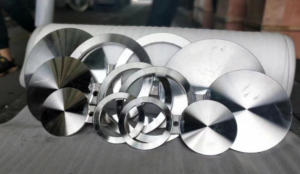Edelstahl 316 is a highly versatile and corrosion-resistant alloy that finds widespread application in various industries. Its unique composition and properties make it an excellent choice for numerous demanding applications, from marine environments to chemical processing plants. In this article, we delve into the intricacies of stainless steel 316, exploring its composition, manufacturing process, and the various grades available.

Wat ass Edelstol 316?
Stainless steel 316, also known as UNS S31600, is an austenitic Chrom-nickel stainless steel alloy with an addition of molybdenum. The molybdenum content gives 316 stainless steel better corrosion resistance than other stainless steel alloys, especially against pitting and crevice corrosion in chloride environments. This alloy is non-magnetic in the annealed condition and can be easily welded and formed.
The composition of stainless steel 316 typically includes approximately 16-18% chromium, 10-14% nickel, and 2-3% molybdenum. The chromium content forms a protective oxide layer on the steel’s surface, providing resistance to corrosion, while the nickel addition enhances the alloy’s ductility and toughness. The molybdenum, on the other hand, improves the steel’s resistance to specific corrosive environments, particularly those containing chlorides.
How is Stainless Steel 316 Made?
The manufacturing process of stainless steel 316 involves several steps, starting with the preparation of the raw materials. The required alloys, including chromium, nickel, and molybdenum, are mixed in precise proportions and then melted in a furnace to form a molten steel.
Once the molten steel is ready, it is cast into ingots or slabs, which are then cooled and processed further. The next step involves rolling the ingots or slabs into sheets, plates, or bars using rolling mills. This rolling process gives the steel its desired shape and thickness.
Subsequently, the stainless steel goes through a series of heat treatments to adjust its mechanical properties. Annealing, a process that involves heating and cooling the steel, helps to remove internal stresses and improve ductility. Other heat treatments, such as quenching and tempering, may also be applied to achieve specific properties required for the end application.
After heat treatment, the stainless steel 316 may undergo further processing steps such as cutting, machining, or welding to create the final product. Surface finishing, such as polishing or brushing, may also be applied to enhance the steel’s aesthetics and corrosion resistance.
Grades of Stainless Steel 316
Stainless steel 316 is available in various grades, each with specific properties and applications. The most common grades are 316L and 316H.
316L, or low carbon 316, is a variant of stainless steel 316 with a reduced carbon content. This grade is preferred for welding applications as the lower carbon content minimizes the risk of carbide precipitation during welding, which can lead to intergranular corrosion. 316L is widely used in the chemical processing, marine, and food processing industries due to its excellent corrosion resistance.
On the other hand, 316H is a high-carbon version of stainless steel 316. It has a higher carbon content, which provides increased strength and creep resistance at elevated temperatures. This grade is suitable for high-temperature applications, such as heat exchangers and boilers, where resistance to oxidation and scaling is crucial.
In addition to 316L and 316H, there are other specialized grades of stainless steel 316 available, such as those with modified molybdenum content or enhanced corrosion resistance against specific chemicals. These grades are tailored to meet the unique requirements of specific industries and applications.
Konklusioun
Stainless steel 316 is a versatile material with exceptional corrosion resistance, making it suitable for a wide range of applications. Its composition, manufacturing process, and available grades allow for customization to meet specific requirements. Understanding the intricacies of stainless steel 316 is crucial for selecting the appropriate grade and ensuring optimal performance in various environments.
Thank you for reading our article and we hope you’ve enjoyed it. If you are looking for the 316 stainless steel supplier and manufacturer online now, we would advise you to visit Sino Edelstol.
As a leading supplier of stainless steel products from Shanghai China, Sino Stainless Steel offers customers high-quality 316 stainless steel, 304 Edelstahl, STAINLESS Stol coils, stainless steel decorative sheets, STAINLESS Stol Réier, STAINLESS Stol Päifen, STAINLESS Stol Läischte, STAINLESS Stol Placke, an STAINLESS Stol Baren zu engem ganz kompetitive Präis.
 +86-18621535697
+86-18621535697  : export81@huaxia-intl.com
: export81@huaxia-intl.com